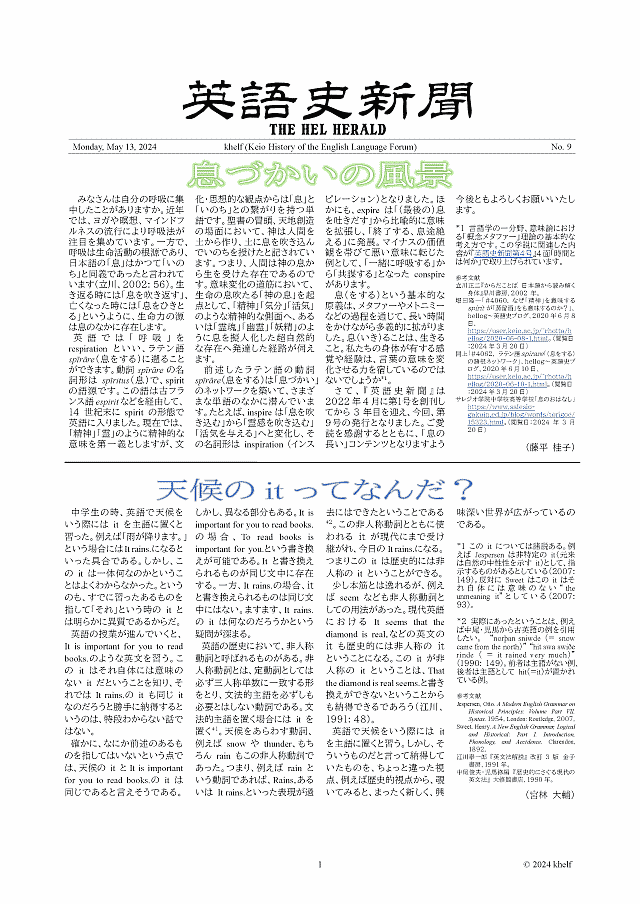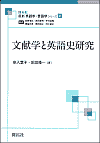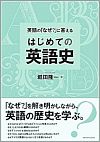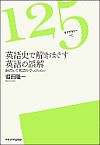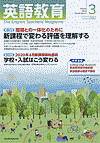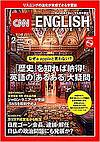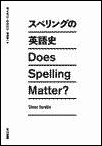最近 7 日分を以下に表示中 / 今月の一覧
2024-07-26 Fri
■ #5569. この夏,khelf の「hel活」が盛り上がっています! [khelf][helkatsu][notice][hellive2024][heldio]

(このアイコンとバナーは khelf メンバーが作成)
昨日の記事「#5568. 9月8日(日)「英語史ライヴ2024」を開催します」 ([2024-07-25-1]) で紹介した Voicy heldio の公開生収録イベントは,khelf(慶應英語史フォーラム)が主催するイベントとなります.複数の出版社さんより協賛いただいています.
このイベントに向けて khelf の「hel活」 (helkatsu) が盛り上がってきています.以下,主立った活動を紹介します.
(1) khelf の公式サイトに新しいページやコンテンツが加わっています.
・ 「英語史ライヴ2024」特設ページがオープンしています.イベントに関する最新の情報は,こちらから得られます.
・ 「英語史コンテンツ50+」は終盤の終盤ですが,まだ継続しています.
(2) Voicy 「英語の語源が身につくラジオ (heldio)」への khelf メンバーの出演
・ 「#1119. 9月8日(日)「英語史ライヴ2024」を開催します by khelf」(2024年6月22日)
・ 「#1130. 教えて khelf 会長! --- 新シリーズののろし」(2024年7月3日)
・ 「#1137. 教えて khelf 会長! --- Yes, this is! 問題を語る」(2024年7月10日)
・ 「#1143. 教えて khelf 会長! --- 言語学的センスを磨く方法は?」(2024年7月16日)
・ 「#1145. 重大告知 --- khelf 主催「英語史ライヴ2024」の出演者と協賛社の発表」(2024年7月18日)
・ 「#1146. khelf 広報班の活動紹介 --- なかの人たちの声」(2024年7月19日)
・ 「#1147. 日常の英語史・英語学 --- khelf 疋田くんの新シリーズ」(2024年7月20日)
・ 「#1152. 【速報】「英語史ライヴ2024」スポンサー,研究社との打合報告」(2024年7月25日)
・ 「#1153. 『英語語源辞典』を読むシリーズ (8) --- khelf 藤原くんと king の項を精読する」(2024年7月26日)
(3) khelf の公式 Instagram アカウント @khelf_keio からの発信活動
・ ゼミ長出演の英語史系ショート動画シリーズがスタート.第1弾と第2弾をどうぞ.
・ 「英語史ライヴ2024」に関する投稿.第1弾はこちらで,最新投稿はこちら.
・ 今後 khelf メンバーを紹介する投稿なども企画中.
(4) khelf の公式 X アカウント @khelf_keio からの発信活動
・ 1450フォロワーを擁し,日々の khelf 活動の広報塔として鋭意活動しています.最近のこちらの謎めいたポストは何を意味するのでしょうか!?
(5) khelf 発行の『英語史新聞』 (The HEL Herald)
・ 「英語史ライヴ2024」の当日,9月8日(日)に発行予定の第10号に向けて,編集作業が進行中です.
・ 号外も含めバックナンバー一覧はこちらのページからどうぞ.
このように khelf は夏休みの間も暑さに負けず旺盛なhel活を続けていきます.応援のほどよろしくお願いいたします!
2024-07-25 Thu
■ #5568. 9月8日(日)「英語史ライヴ2024」を開催します [hellive2024][khelf][voicy][heldio][helwa][helkatsu][hel_education][notice]

Voicy 「英語の語源が身につくラジオ (heldio)」のイベントのご案内です.2024年9月8日(日)に12時間連続の公開生収録の「英語史ライヴ2024」 (hellive2024) を都内某所で開催します! khelf(慶應英語史フォーラム)主催の,英語史に特化した大企画です.英語史系イベントとしては前代未聞の試みとなります.
学界の一線で活躍する研究者の先生方との対談を企画しているほか,「英語史クイズ」や人気シリーズ「はじめての古英語」なども予定しています.また,多くの出版社より協賛いただくことになっております.
当日は午前6時から午後6時まで,12時間の Voicy heldio 生配信をお届けします.公開生収録には,khelf メンバー,他大学の関係者の先生方や学生たちが立ち会います.
そのほか,Voicy heldio のプレミアムリスナー限定配信チャンネル「英語史の輪」 (helwa)(月額800円のサブスク)のリスナーさんにもご登録の上ご参加いただけます.詳しくは7月18日(木)の配信回「【英語史の輪 #160】「英語史ライヴ2024」への参加を正式に募集します(生配信)」をお聴きください.「英語史ライヴ2024」に参加するために helwa にお入りいただくことも歓迎いたします.
今から1ヶ月半ほど後のイベントですが,目下 khelf で鋭意準備中です.7月25日現在,「英語史ライヴ2024」に関して決まっていることを一覧します.
【メイン MCs】
・ 青木輝さん(khelf 会長,慶應義塾大学大学院生)
・ 藤原郁弥さん(慶應義塾大学大学院生)
・ 「まさにゃん」こと森田真登さん(武蔵野学院大学,元 khelf 会長)
・ 小河舜さん(上智大学)
・ 金田拓さん(帝京科学大学)
・ 堀田隆一(慶應義塾大学)
【対談予定の先生(五十音順)】
・ 秋元実治先生(青山学院大学名誉教授)
・ 家入葉子先生(京都大学)
・ 井上逸兵先生(慶應義塾大学)
・ 今村洋美先生(中部大学)
・ 田辺春美先生(成蹊大学)
・ 福元広二先生(法政大学)
・ 保坂道雄先生(日本大学)
・ 村岡宗一郎先生(日本大学)
・ 和田忍先生(駿河台大学)
【協賛出版社(五十音順)】
・ 開拓社
・ 研究社
・ 昭和堂
・ 大修館書店
・ 白水社
・ 早川書房
・ ひつじ書房
【配信予定の番組】
・ 先生方との対談
・ 人気シリーズ「はじめての古英語」
・ 英語史クイズ
・ 『英語史新聞』第10号お披露目
・ 『英語語源辞典』読書会
・ 古英語LINEスタンプお披露目
今後の決定事項は随時 heldio の配信回や,khelf の公式 HP より「英語史ライヴ2024」特設ページにてお知らせしていきます.また,khelf の公式 X アカウント @khelf_keio,および khelf の公式 Instagram アカウント @khelf_keio からもイベント情報を発信していきます.日々ご注目ください.
とりわけ heldio では,頻繁に「英語史ライヴ2024」関連の告知配信をお届けしていく予定です.これまでの重要な告知回を挙げておきます.
・ 「#1119. 9月8日(日)「英語史ライヴ2024」を開催します by khelf」(2024年6月22日)
・ 「#1145. 重大告知 --- khelf 主催「英語史ライヴ2024」の出演者と協賛社の発表」(2024年7月18日)
・ 「#1152. 【速報】「英語史ライヴ2024」スポンサー,研究社との打合報告」(2024年7月25日)
「英語史ライヴ2024」,準備段階からおおいに盛り上げていきたいと思います.応援をよろしくお願いいたします.
2024-07-24 Wed
■ #5567. ノア・ウェブスター入門の YouTube 動画 [webster][youtube][inohota][notice][lexicography][spelling_reform][ame][biography]
お知らせ 「いのほた言語学チャンネル」より2種類の再生リストを作りました.井上回と堀田回です.どうぞご利用ください.
同僚の井上逸兵さんと運営している YouTube 「いのほた言語学チャンネル」の最新回は,日曜日に公開された「#251. 辞書編纂者で知られるウェブスターのイギリス綴り colour からアメリカ color への綴り字改革の背後にあるものは?」です.アメリカ英語の辞書編纂者として知られる Noah Webster (1758--1843) に,英語史の観点から迫った入門動画です.
この動画では,辞書編纂者としてのみならず,ウェブスターのもう1つの側面,綴字改革者としてのウェブスターを紹介しています.彼は colour の綴字を color に, centre を center に改める運動を先導し,アメリカ英語のイギリス英語からの独立を主張しました.
ウェブスターはもともと教育者として活動しており,英語の教科書を自作するなどして教育に貢献していました.彼の初期の著作であり,後に Blue-Backed Speller として知られるようになった綴字教本は飛ぶように売れ,その後の100年間で8000万部も売れる大ベストセラーとなりました.
また,ウェブスターは愛国心の強い人物で,アメリカ独立戦争にも参戦しています.実際,その綴字改革論にも,反イギリスの反骨精神が宿っていました.彼の改革のすべてが成功したわけではありませんが,上記のように一部の改革提案は受け入れられ,アメリカ英語の綴字として定着しました.ウェブスターの名声と成功は,彼の教育に対する情熱とアメリカ独立の精神に支えられていたといえます.
ウェブスターについては hellog でも webster の各記事で書いてきました.とりわけ以下をご参照ください.
・ 「#468. アメリカ語を作ろうとした Webster」 ([2010-08-08-1])
・ 「#2905. Benjamin Franklin に影響を受けた Noah Webster」 ([2017-04-10-1])
・ 「#3087. Noah Webster」 ([2017-10-09-1])
・ 「#3247. 講座「スペリングでたどる英語の歴史」の第5回「color か colour か? --- アメリカのスペリング」」 ([2018-03-18-1])
・ 「#4152. アメリカ英語の -our から -or へのシフト --- Webster の影響は限定的?」 ([2020-09-08-1])
・ 「#4735. なぜ Webster は綴字改革をなし得たか?」 ([2022-04-14-1])
2024-07-23 Tue
■ #5566. 中英語期のフランス借用語が英語語彙に与えた衝撃 --- 月刊『ふらんす』の連載記事第5弾 [hakusuisha][french][loan_word][notice][rensai][furansu_rensai][borrowing][norman_french][doublet][hybrid][lexicology]
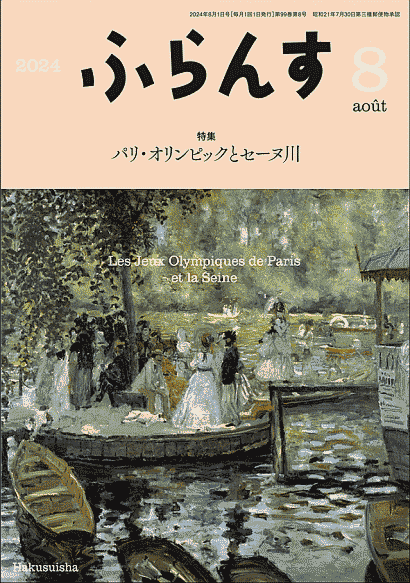
*
今年度,白水社の月刊誌『ふらんす』にて連載記事「英語史で眺めるフランス語」を書いています.本日『ふらんす』8月号が刊行されました.連載としては第5回となります.
今回は前回の「フランス借用語の大流入」に引き続いての話題です.大流入の結果,英語語彙にどのような衝撃がもたらされたのか,に迫ります.以下の4つの小見出しのもとにエッセイを書いています.
1. 単語借用と語彙体系の変化
中英語期にフランス語からの大量の単語借用があり,英語の語彙体系に大きな影響を与えました.これにより,英語の語彙のあり方が大きく変化しました.
2. 死語となった本来の英単語
フランス語からの借用語により,既存の英単語が置き換えられ死語となるケースが多くありました.例えば「おじ」を意味する ēam が uncle に,「嫉妬」を意味する anda が envy に置き換えられるなどしました.
3. ノルマン・フランス語と中央フランス語
初期の借用語はノルマン方言から,後期はパリの中央フランス語から入りました.これにより,同じ語源を持つ単語が異なる形で英語に入り,2重語 (doublet) として共存するようになりました.
4. 英仏ハイブリッド語
フランス語の語形成に慣れた英語は,フランス語由来の接辞を英語本来の単語に付けて新しい単語を作り出しました.これらは英仏要素を含むハイブリッド語として英語に定着しました.
過去4回の連載記事も hellog で紹介してきましたので,以下よりお読みください.
・ 「#5449. 月刊『ふらんす』で英語史連載が始まりました」 ([2024-03-28-1])
・ 「#5477. なぜ仏英語には似ている単語があるの? --- 月刊『ふらんす』の連載記事第2弾」 ([2024-04-25-1])
・ 「#5509. 英語に借用された最初期の仏単語 --- 月刊『ふらんす』の連載記事第3弾」 ([2024-05-27-1])
・ 「#5538. フランス借用語の大流入 --- 月刊『ふらんす』の連載記事第4弾」 ([2024-06-25-1])
・ 堀田 隆一 「英語史で眺めるフランス語 第5回 中英語期のフランス借用語が英語語彙に与えた衝撃」『ふらんす』2024年8月号,白水社,2024年7月23日.52--53頁.
2024-07-22 Mon
■ #5565. 中英語期,目的語を従える動名詞の構造6種 [syntax][gerund][me][preposition][word_order][case][genitive][article]
標記について,宇賀治 (274) により,Tajima (1985) を参照して整理した6種の構造が現代英語化した綴字とともに一覧されている.
I 属格目的語+動名詞,例: at the king's crowning (王に王冠を頂かせるとき)
II 目的語+動名詞,例: other penance doing (ほかの告解をすること)
III 動名詞+of+名詞,例: choosing of war (戦いを選択すること)
IV 決定詞+動名詞+of+名詞,例: the burying of his bold knights (彼の勇敢な騎士を埋葬すること)
V 動名詞+目的語,例: saving their lives (彼らの命を助けること)
VI 決定詞+動名詞+目的語,例: the withholding you from it (お前たちをそこから遠ざけること)
目的語が動名詞に対して前置されることもあれば後置されることもあった点,後者の場合には前置詞 of を伴う構造もあった点が興味深い.また,動名詞の主語が属格(後の所有格)をとる場合と通格(後の目的格)をとる場合の両方が混在していたのも注目すべきである.さらに,動名詞句全体が定冠詞 the を取り得たかどうかという問題も,統語論史上の重要なポイントである.

・ Tajima, Matsuji. The Syntactic Development of the Gerund in Middle English. Tokyo: Nan'un-Do, 1985.
・ 宇賀治 正朋 『英語史』 開拓社,2000年.
2024-07-21 Sun
■ #5564. 古英語のラテン語からの借用語はせいぜい数百語 [oe][loan_word][borrowing][latin][old_norse][celtic][latin][germanic][lexicology][link]
古英語の語彙は相当程度にピュアなゲルマン系の語彙といってよく,借用語は限られている.しかも,その限られた借用語の大部分がラテン語 (latin) からのものである.ほかには古ノルド語 (old_norse),ケルト語 (celtic),ゲルマン諸語 (germanic), フランス語 (french) からの借用語もないではないが,あくまで影は薄い.
これらの言語から古英語への借用語は,むしろ例外的だからこそ気になるのだろう.数が少ないので,古英語を読んでいるときに出くわすとやけに目立つのである.英語史研究でもかえってよく注目されている.Hogg は,古英語期の語彙と語彙借用について次のように評している.
. . . there are words of non-native origin in Old English, the vast majority of which are from Latin. It has been estimated only about 3 per cent of Old English vocabulary is taken from non-native sources and it is clear that the strong preference in Old English was to use its native resources in order to create new vocabulary. In this respect, therefore, and as elsewhere, Old English is typically Germanic. (102--03)
. . . there was in Old English only a very limited use of words taken from other language, i.e. borrowed or loan words, and those words were primarily from Latin. Apart from Latin, Old English borrowed words from the Scandinavian languages after the Viking invasions, from the celtic languages mostly at a very early date, and there was also a scattering of forms from the other Germanic languages. At the very end of the period we begin to see the first loan words from Norman French. (109)
古英語期の各言語からの語彙借用については,以下の記事を参照.
・ 「#32. 古英語期に借用されたラテン語」 ([2009-05-30-1])
・ 「#1437. 古英語期以前に借用されたラテン語の例」 ([2013-04-03-1])
・ 「#1619. なぜ deus が借用されず God が保たれたのか」 ([2013-10-02-1])
・ 「#1945. 古英語期以前のラテン語借用の時代別分類」 ([2014-08-24-1])
・ 「#2578. ケルト語を通じて英語へ借用された一握りのラテン単語」 ([2016-05-18-1])
・ 「#3787. 650年辺りを境とする,その前後のラテン借用語の特質」 ([2019-09-09-1])
・ 「#3788. 古英語期以前のラテン借用語の意外な日常性」 ([2019-09-10-1])
・ 「#3789. 古英語語彙におけるラテン借用語比率は1.75%」 ([2019-09-11-1])
・ 「#3790. 650年以前のラテン借用語の一覧」 ([2019-09-12-1])
・ 「#3829. 650年以後のラテン借用語の一覧」 ([2019-10-21-1])
・ 「#3830. 古英語のラテン借用語は現代まで地続きか否か」 ([2019-10-22-1])
・ 「#1216. 古英語期のケルト借用語」 ([2012-08-25-1])
・ 「#3821. Old Saxon からの借用語」 ([2019-10-13-1])
・ 「#302. 古英語のフランス借用語」 ([2010-02-23-1])
・ Hogg, Richard. An Introduction to Old English. Edinburgh: Edinburgh UP, 2002.
2024-07-20 Sat
■ #5563. 古英語の変則動詞 (anomalous verbs) [verb][oe][conjugation][inflection][paradigm][suppletion][auxiliary_verb][be]
現代英文法では,動詞を規則動詞 (regular verbs) と不規則動詞 (irregular verb) とに分けるやり方がある.不規則動詞のなかでもとりわけ不規則性の激しい少数の動詞(例えば be, have, can など)は,変則動詞 (anomalous verbs) と呼ばれることがある.これら変則動詞の変則性は,歴史的にはある程度は説明できるものの,相当に複雑であることは確かであり,共時的な観点からは「変則」というグループに追いやって処理しておこうという一種の便法が伝統的に採用されている.
古英語にも,共時的な観点からの変則動詞は存在した.willan (= PDE "to will"), dōn (= PDE "to do"), gān (= PDE "to go") である.古英語においてすら共時的に「変則」として片付けられてしまう,これらの異色の動詞の屈折表を,Hogg (40) より掲げよう.古くから変則的だったのだ.
| Pres. | willan | dōn | gān |
| 1 Sing. | wille | dō | gā |
| 2 Sing. | wilt | dēst | gǣst |
| Sing. | wile | dēð | gǣð |
| Plural | willað | dōð | gāð |
| Subj. (Pl.) | wille (willen) | dō(dōn) | gā(gān) |
| Participle | willende | dōnde | --- |
| Past | |||
| Ind. | wolde | dyde | ēode |
| Participle | --- | ġedōn | ġegān |
いうまでもなく bēon (= PDE "to be") も,古英語のもう1つの変則動詞である.この動詞については「#2600. 古英語の be 動詞の屈折」 ([2016-06-09-1]) を参照.
・ Hogg, Richard. An Introduction to Old English. Edinburgh: Edinburgh UP, 2002.
[ 固定リンク | 印刷用ページ ]
| このページへのアクセス数 | |
| 最終更新時間 | 2024-07-26 09:36 |
Copyright (c) Ryuichi Hotta, 2009--

